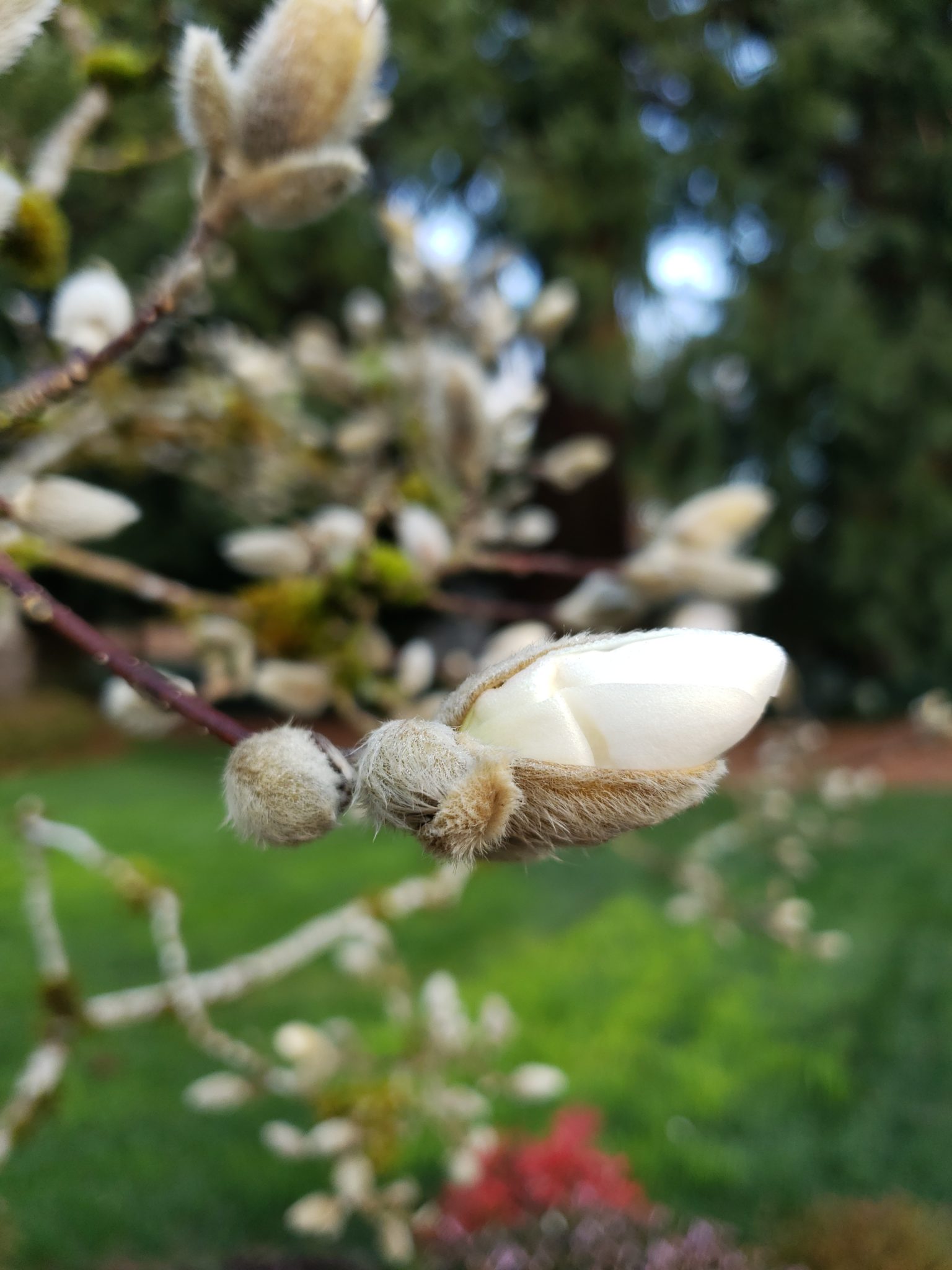
Tree Dormancy Breaking
Even though Portland area skies are still cold, wet and grey, it won’t be long before we see signs of spring in the trees. Once trees break dormancy and cellular activity restarts, we can see flower buds swell and color, and tiny new leaves emerge from swollen leaf buds in deciduous trees. Bright green needles emerge from the tips of evergreen trees. The trees began their preparations for this spring activity last summer.
Dormancy and Chilling Requirement
The shortening days of fall triggers the production of abscisic acid, which impedes growth, and causes dormancy in trees. For a full description of the onset of dormancy in trees, see our previous article “Dormancy Onset In Trees”. Over the winter, cold temperatures deplete the abscisic acid. When the concentration of the growth-impeding hormone is low enough, cellular activity and growth can begin when conditions allow. The amount of cold time required to deplete the abscisic acid enough for growth to occur in spring is called the chilling requirement, and is a different amount of time for every species.
A tree’s USDA hardiness zone is an indication of where a tree will thrive. The chilling requirement is one of the determining factors of the hardiness zone. Trees native to climates with milder winters will have a shorter chilling requirement. If this mild-winter native tree is planted in a colder winter climate, its chilling requirement will be met when cold temperatures are still likely. An unseasonable warm spell could then stimulate growth that would be frost damaged by subsequent cold temperatures.
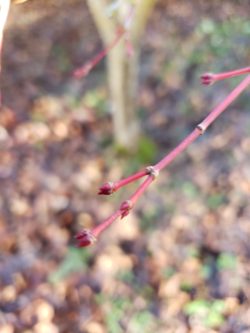
Growth Hormones
Once the chilling requirement is met, warmer temperatures and increased day length trigger the production of growth-stimulating hormones. Gibberellins stimulate stem growth, cytokinins regulate root growth and cell division, and auxins trigger tip elongation while inhibiting side shoot growth.
Bud Formation
While the long Portland summer days provide the trees with ample sunlight to make sugars, the trees are already preparing for the winter ahead. Plant buds are where new growth will occur. Buds are formed during the summer and fall prior to the spring in which we see them develop into new structures. This schedule of bud formation allows the tree to develop these important structures when there is ample energy available.
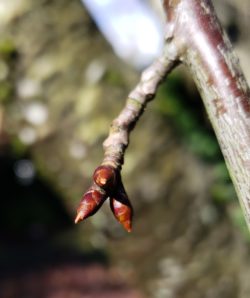
The buds spend the winter protected from the cold by tightly-packed leathery scales, seen covering the flowering cherry tree buds above.
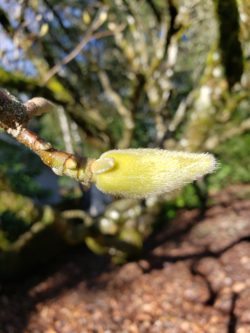
Some plants, like the saucer magnolia above, grow insulating fuzz on their buds for further cold protection.
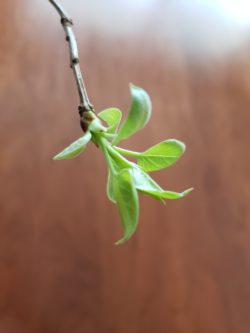
Leaf buds are packed with immature leaves that will unfold when the weather warms.
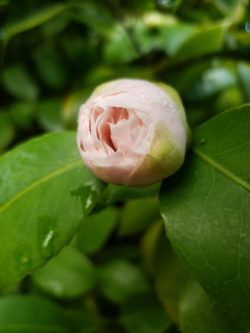
On flowering trees and shrubs, flower buds hold the promise of spring blooms. The round flower buds swell before bud burst, seen in the camellia above.
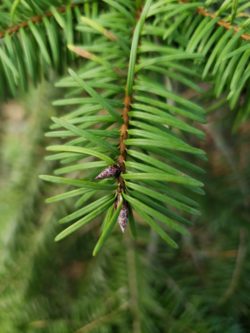
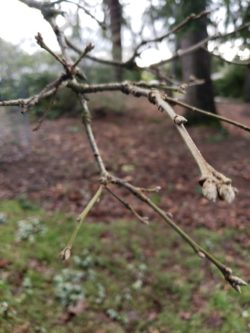
Growth buds, at the tips of twigs, are where the branches elongate and how the tree gets taller and the canopy wider. The buds at the tips of the Douglas-fir tree, left, and the white oak tree, right, are where the branches will elongate in the spring. You can read more about growth buds in our “Tree Anatomy: Growth Buds” NW Treebune article.
Stored Starches Fuel Spring Growth
Excess sugars are converted to stored starches in the stem and roots during fall. Warming spring temperatures break down these stored starches into usable sugars. Because deciduous trees cannot make their own energy in the spring until newly grown leaves mature enough to photosynthesize, this stored energy is essential for spring growth.
A Chinese proverb says “Spring is sooner recognized by nature than by men.” In late winter and early spring, if you brave our rainy, cold weather, you will be rewarded with subtle signs of spring in the dormancy breaking of the trees.


